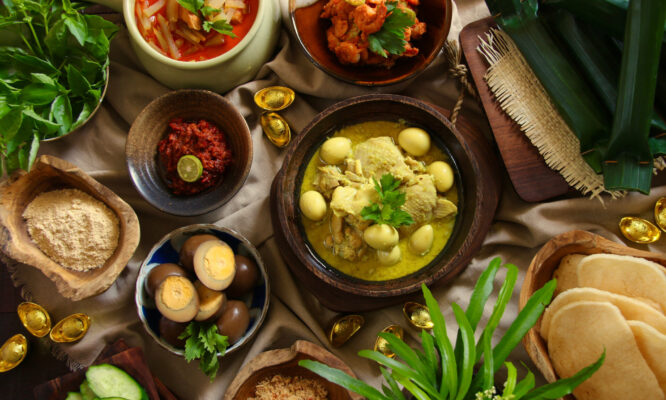Poland’s little pockets of pastry transcend traditions with exotic fillings

Like a little crescent-shaped pocket of joy, the Polish pierogi is a delicious way to experience the country. Dating back to the 18th century, the pierogi, so simple and filling, is changing with the times, adopting exotic ingredients while remaining true to its roots. Exploring the southern Polish city of Krakow, you’ll discover centuries of history keeping pace with the town’s lively student population. And lots of pierogi.

“Pierogi, our dumplings, come from the Far East and date back to the 18th century,” says Piotr Pabisiak, the head chef at the Hilton Garden Inn in Krakow. Hailing from northern Poland, Pabisiak prides himself on uncomplicated, creative cuisine and says people think of pierogi as an easy traditional dish. “Bishop Jacek Odrowaz enjoyed them so much when he tried them in Kiev and is credited with bringing them to Poland,” he says.
Many similar dishes were imported throughout the world based on the Chinese wonton – think of Italian ravioli. But Jacek’s pierogi, like others who brought the dumpling to their countries, had a Polish twist – boiled instead of fried, flour-based pastries using ingredients that were easily accessible and inexpensive.

“Originally, the pierogi was only made on special occasions, weddings, Christmas, Easter and each occasion saw a different type,” Pabisiak says. For Christmas, people ate cabbage and mushroom pierogi and that’s still the tradition today.” While that tradition stands, the pierogi is evolving. Pabisiak says the most popular types are the cabbage and mushroom, mixed meat and onion and the so-called ruskie, filled with potato and cheese. But he’s seeing combinations of just about everything.
“Lentils and coriander, lamb and marjoram, also you can find fusion cuisine – pierogi are found in different restaurants, often with a more southern European influence, like spinach and gorgonzola,” he says. “People are experimenting with the influx of new flavours in the last decade, looking back to the east and options they use.”
While traditionally boiled, pierogi also come fried. In the summer especially, pierogi filled with fresh strawberries, blueberries and forest fruits are popular. Pabisiak says they are typically served sprinkled with sugar and with sour cream on the side.

Krakow, one of the oldest cities in Poland and the country’s second largest, is today young and energetic. Jagellonian University is one of the oldest in the world. The city’s Main Market Square or Rynek Glowny is one of the largest medieval town squares in Europe at 40,000 square metres. Here, you can find the doughy delight sold in cheap and cheerful cafeterias and upmarket restaurants. The U Babci Maliny (kuchniaubabcimaliny.pl) serves huge plates of inexpensive pierogi that will surprise you and your stomach. Order at the counter, grab a seat at one of the many long wooden tables and wait for your number to be called. Then dig in and hope to finish.

For a more upscale affair also near the Main Market Square, you can dine in style at Pod Aniolami (podaniolami.pl), often considered one of the best restaurants in town. In their historic 13th century cellar interior, enjoy award-winning pierogi such as the “noblemen’s dumplings” filled with mushrooms and cabbage, pan-fried with butter and onion.

On Plac Matejki just outside the city walls, enjoy the genteel elegance at Jarema (jarema.pl). Pierogi here are served Krakow-style, in one giant bowl for the table to share. A delicious variety of cabbage and mushroom, ruskie and spinach will leave your bursting with happiness. Jarema oozes old-world style Polish charm, with waitresses in peasant dresses and a calm and relaxing vibe.

Those looking for the more exotic should head to Pierozki u Vincenta (pierozkiuvincenta.pl). It’s a sit-down, casual dining space but with a lengthy and inventive pierogi list. Stay safe with the cabbage and mushroom or stretch your palette with fried beef and salami, broccoli and feta cheese or chicken, beans and chilli peppers. If someone in your party has just about had enough of the pierogi, Awiw (awiw.pl) may be the answer. A warren of brick-lined rooms, you can dine at street level, in the candle-lit cellar, or in the sunny back garden. Try another typical Polish dish, bigos, and old-style stew.
There’s an annual Pierogi Festival held every August, which Pabisiak says aim to renew the dumpling tradition. Based on the number of people enjoying them across the city, in Krakow at least, the pierogi still reigns.









